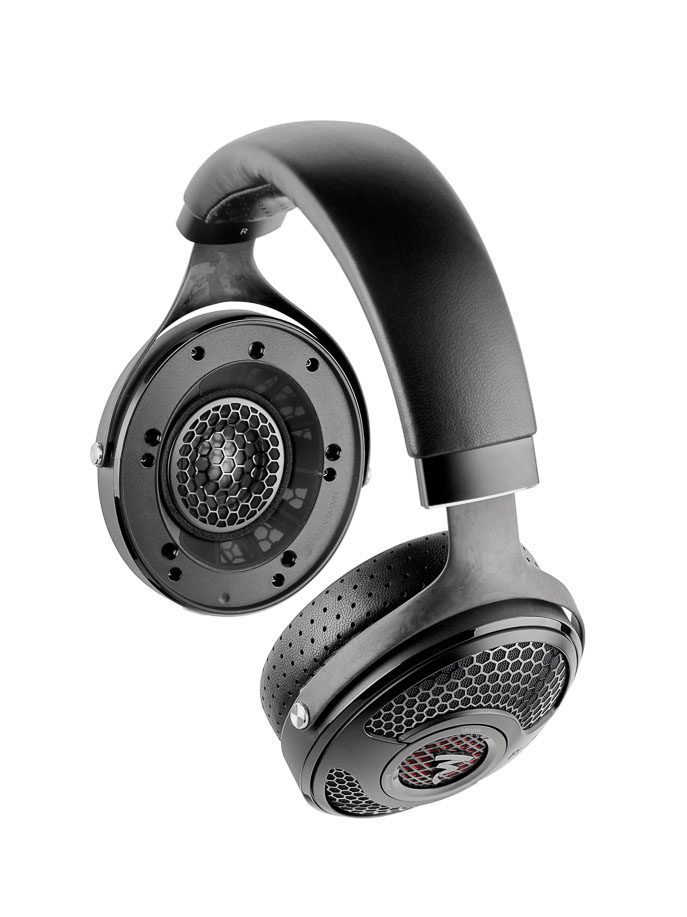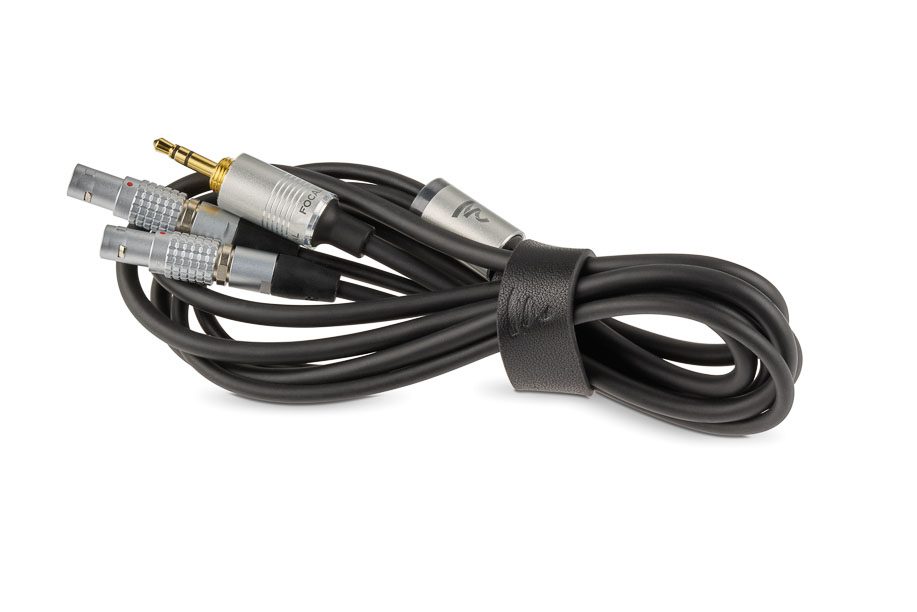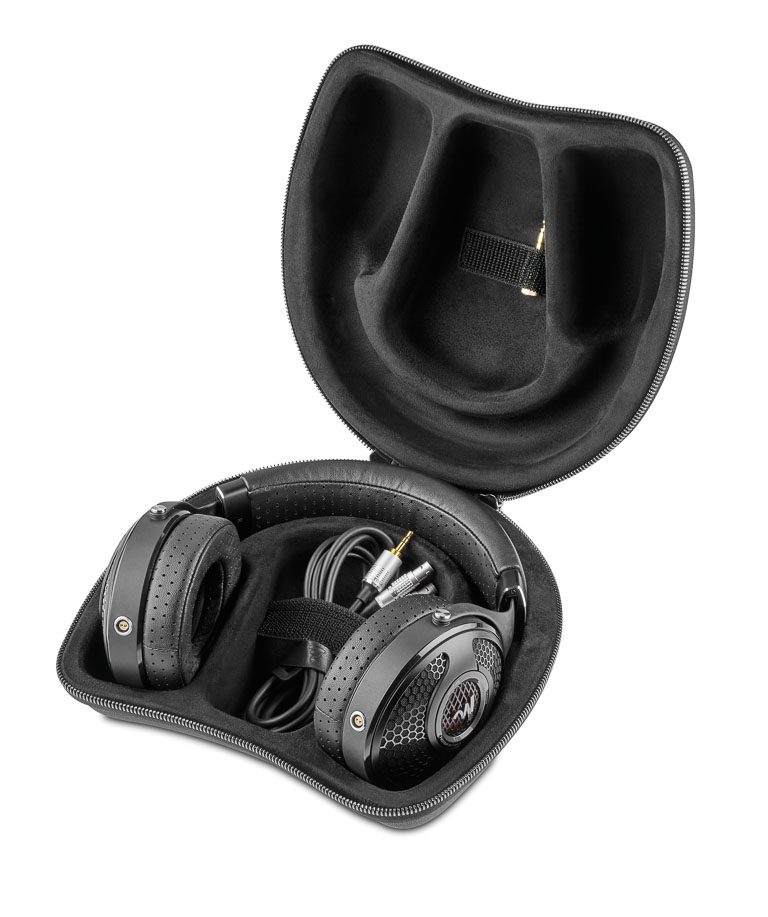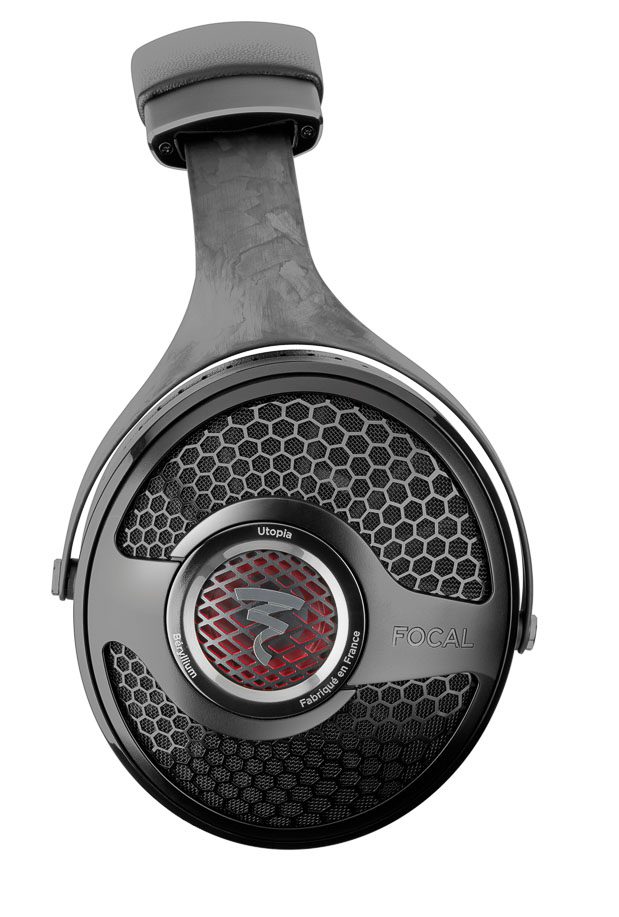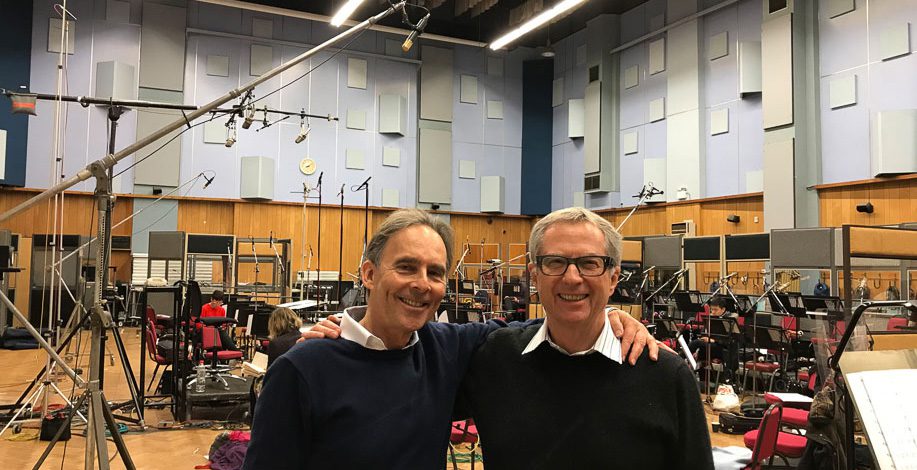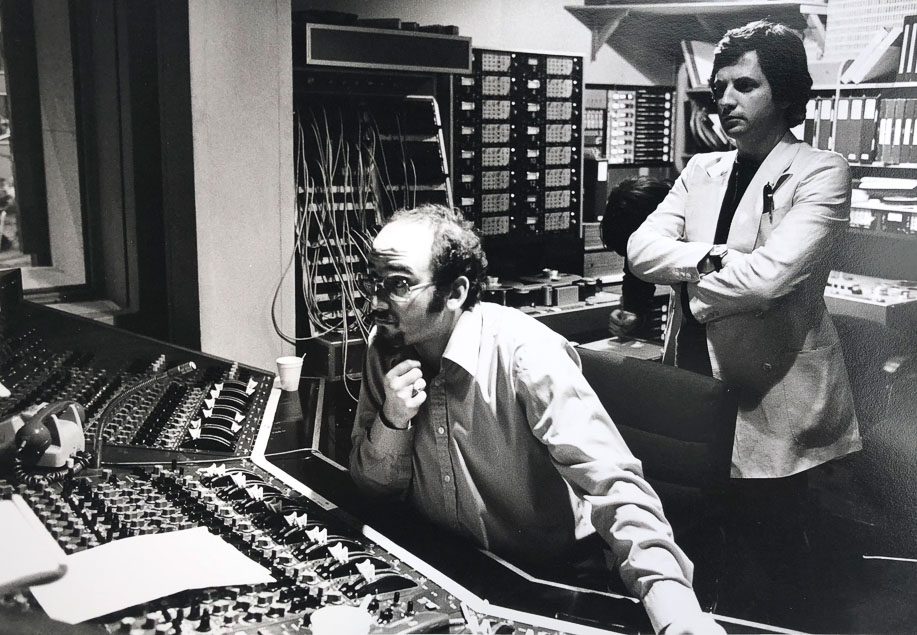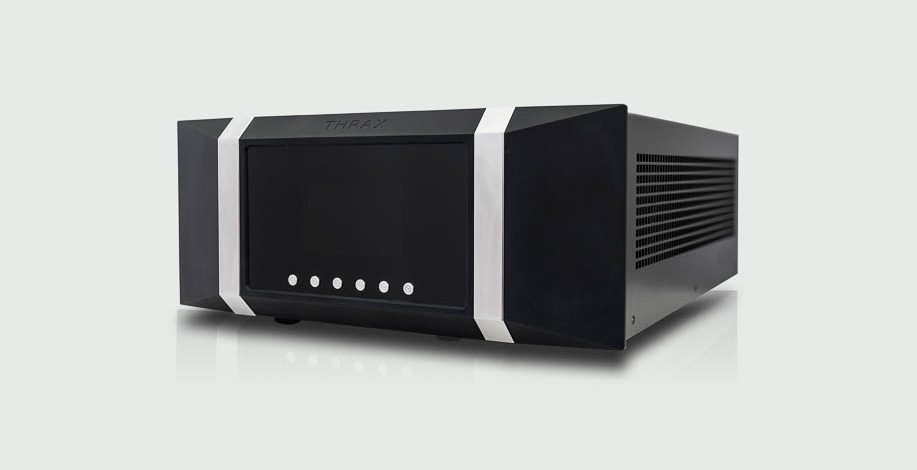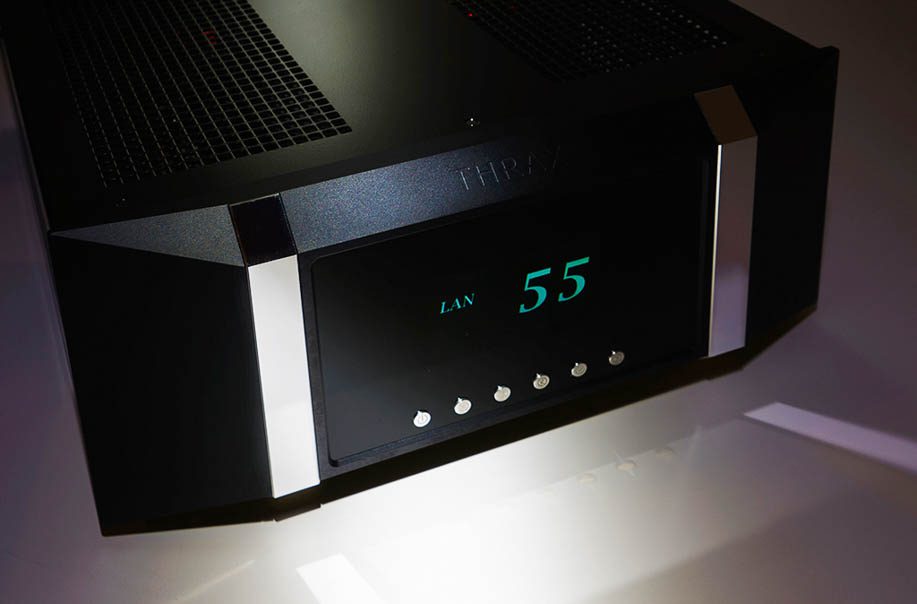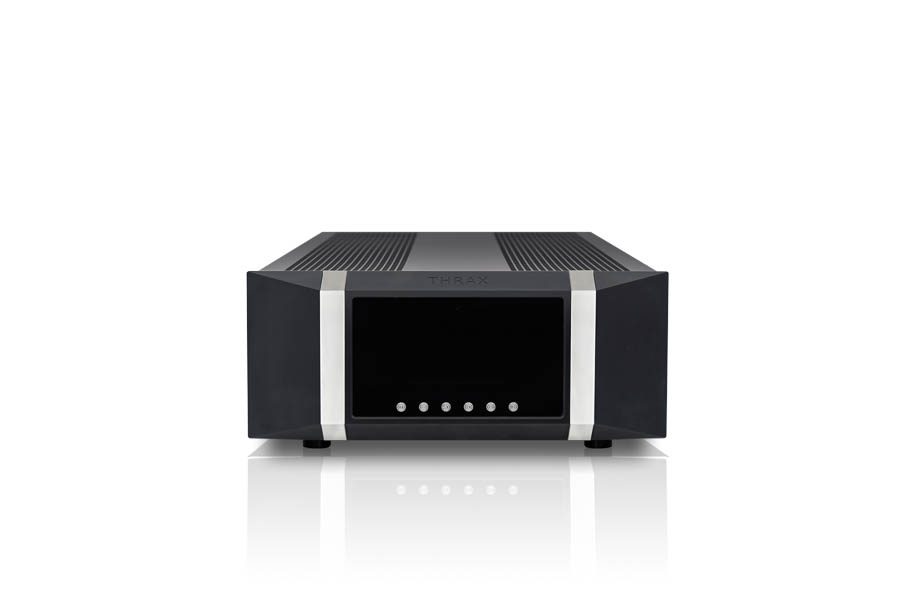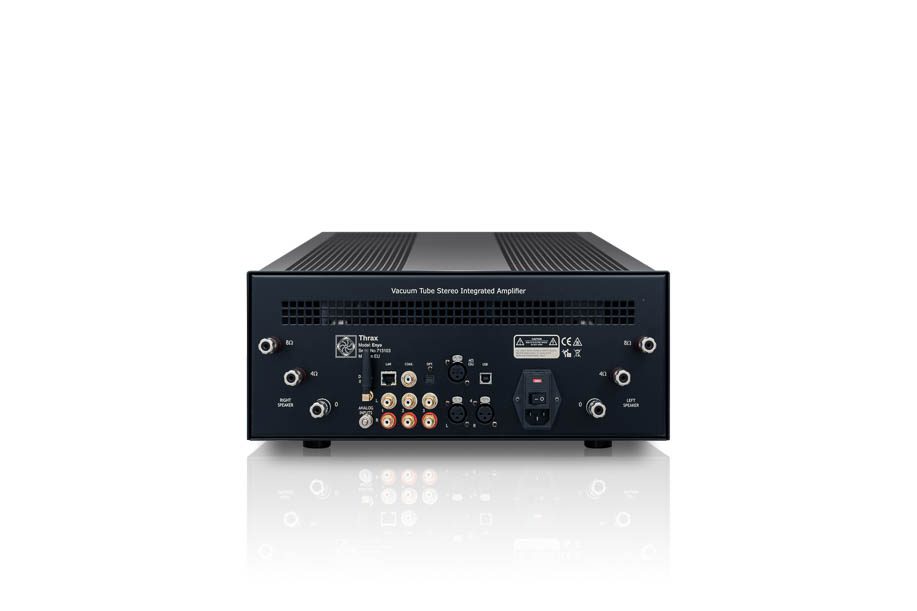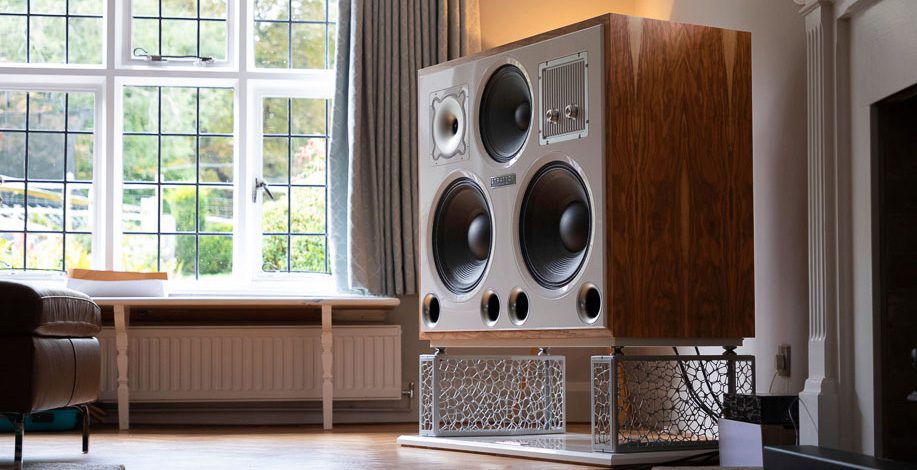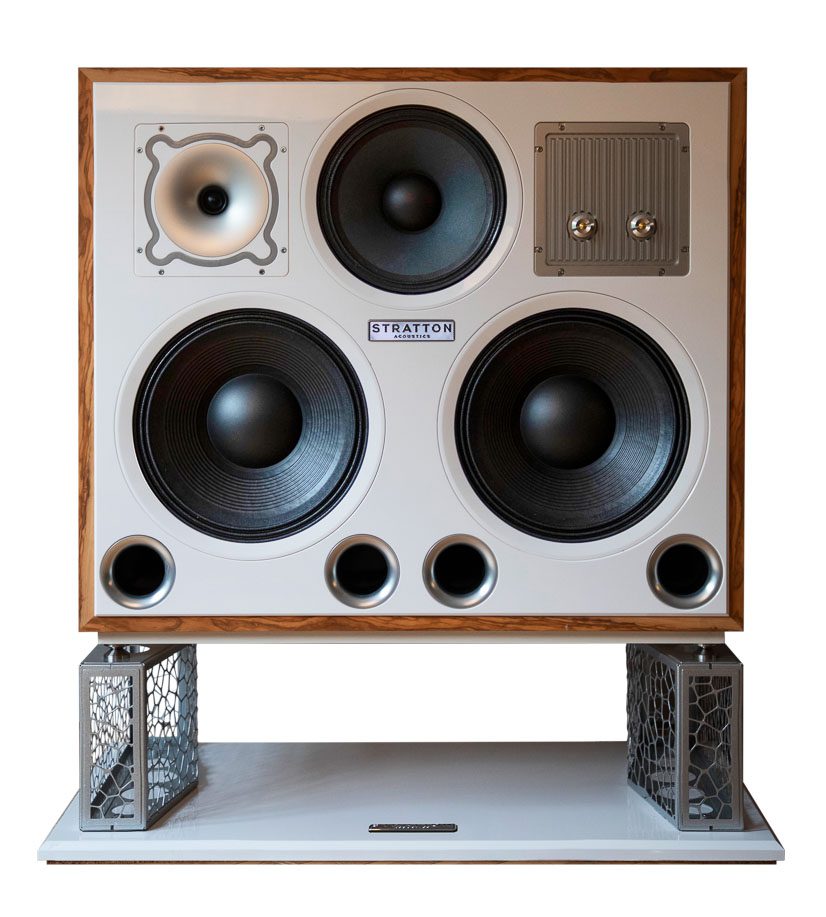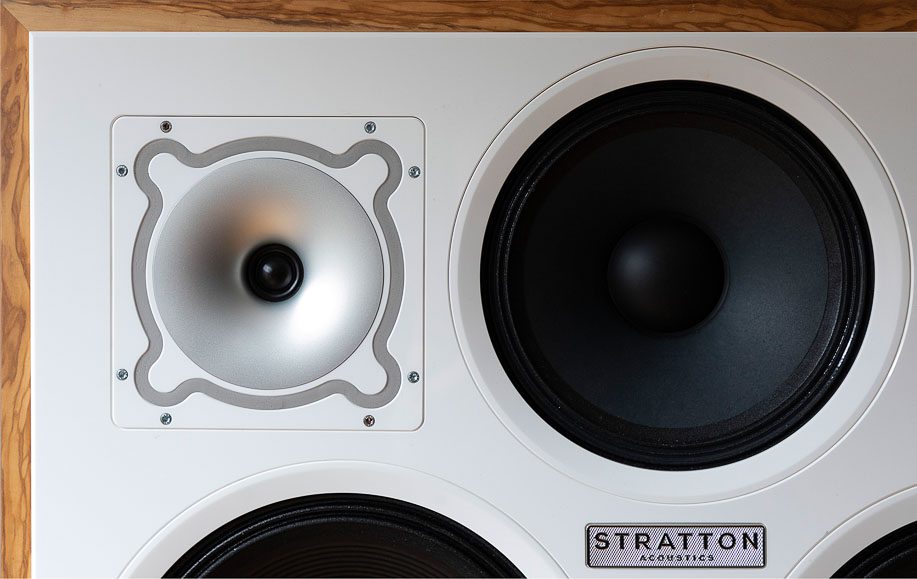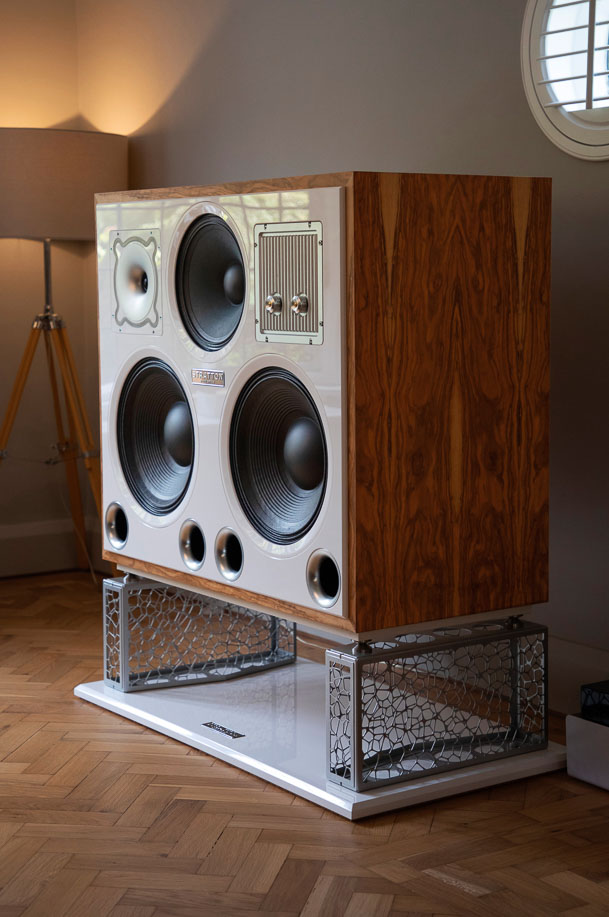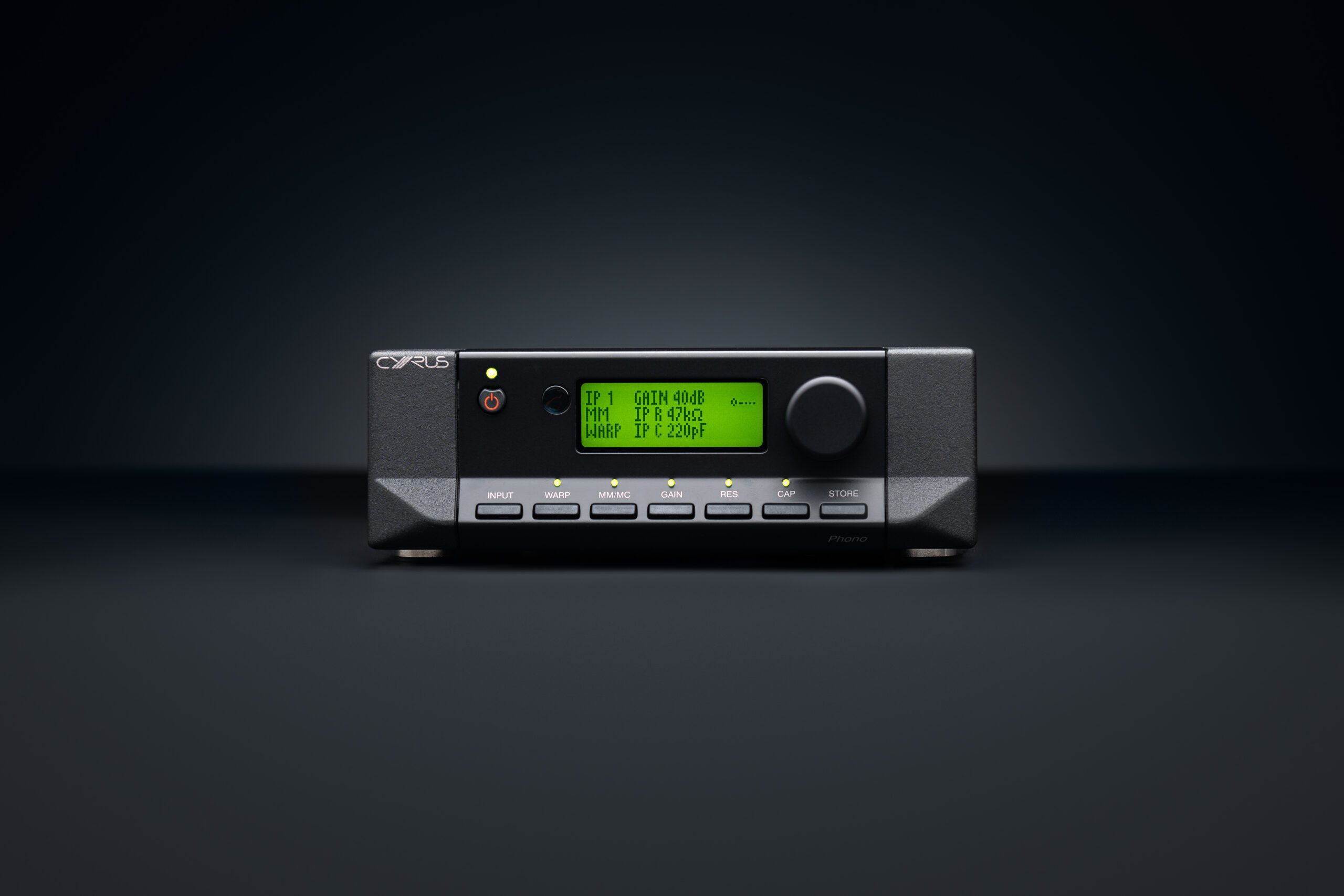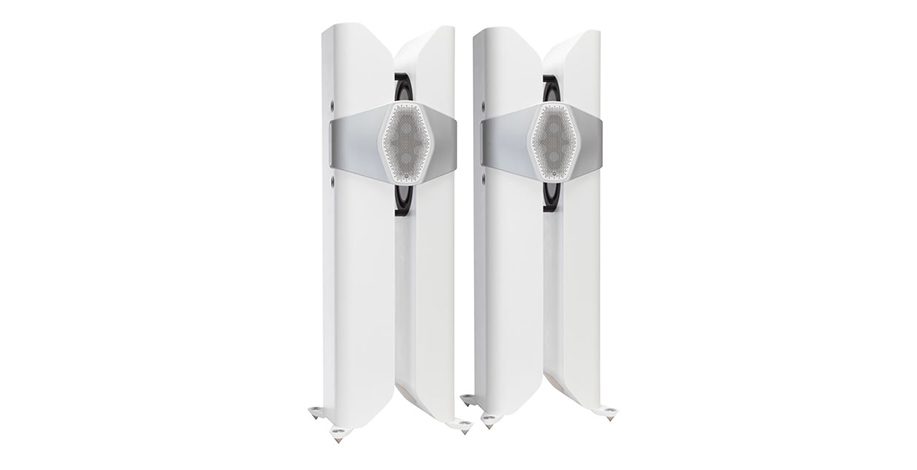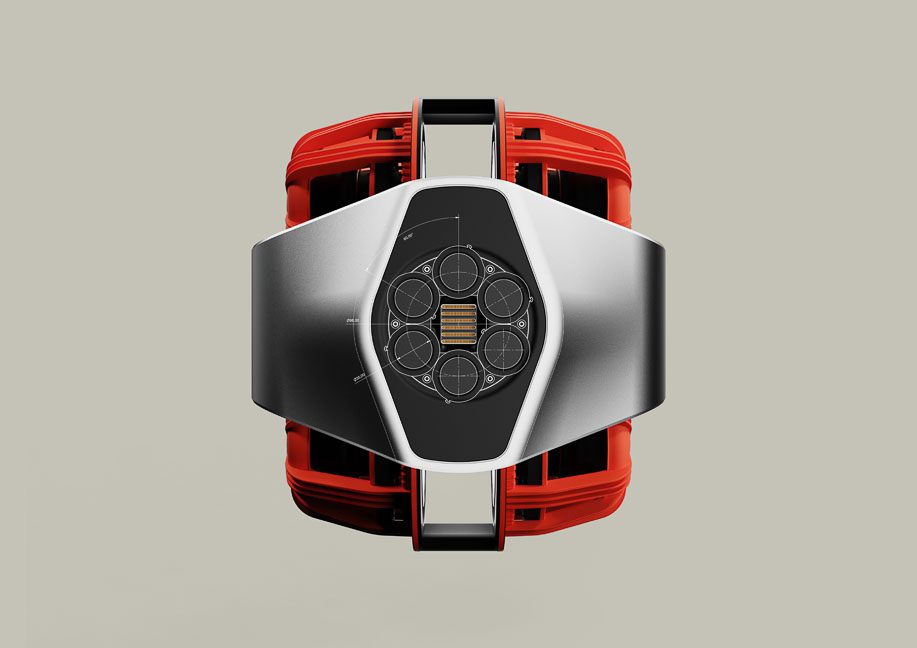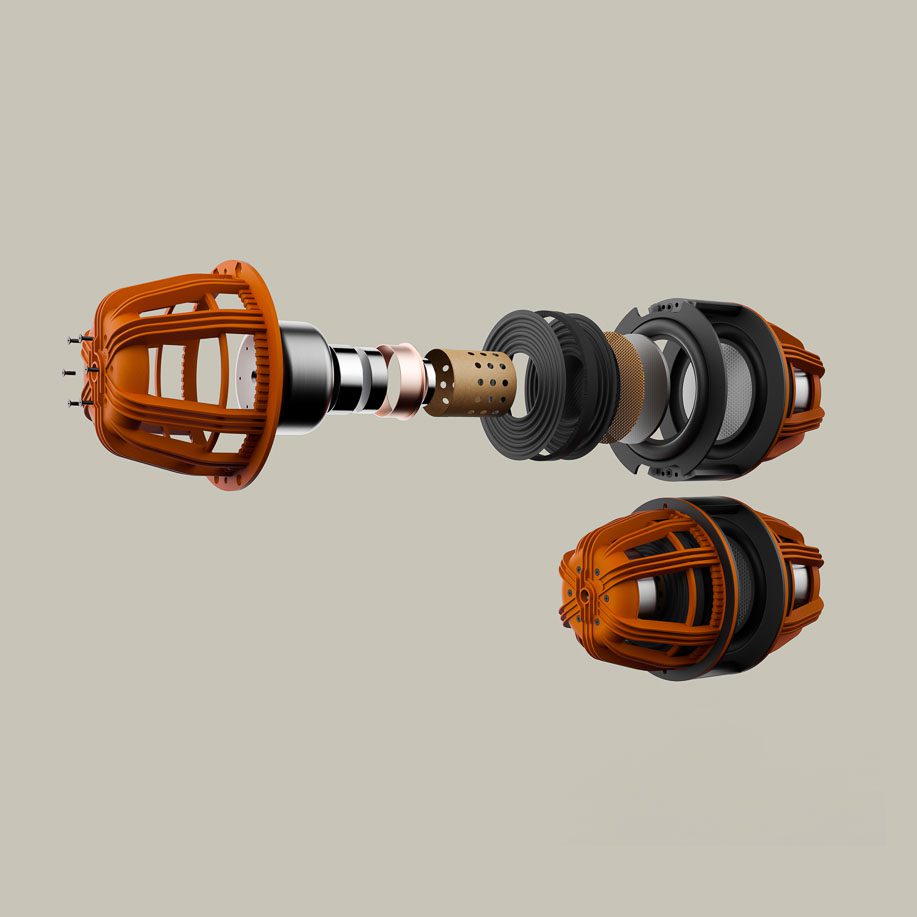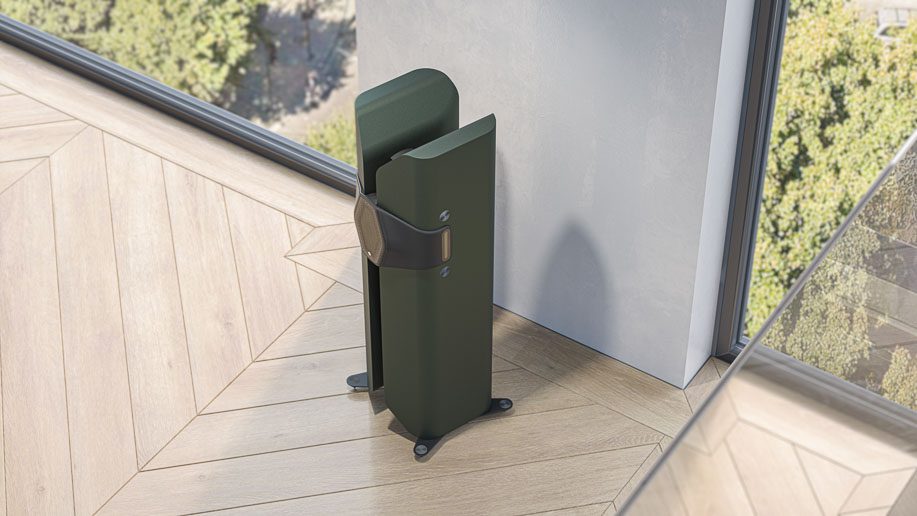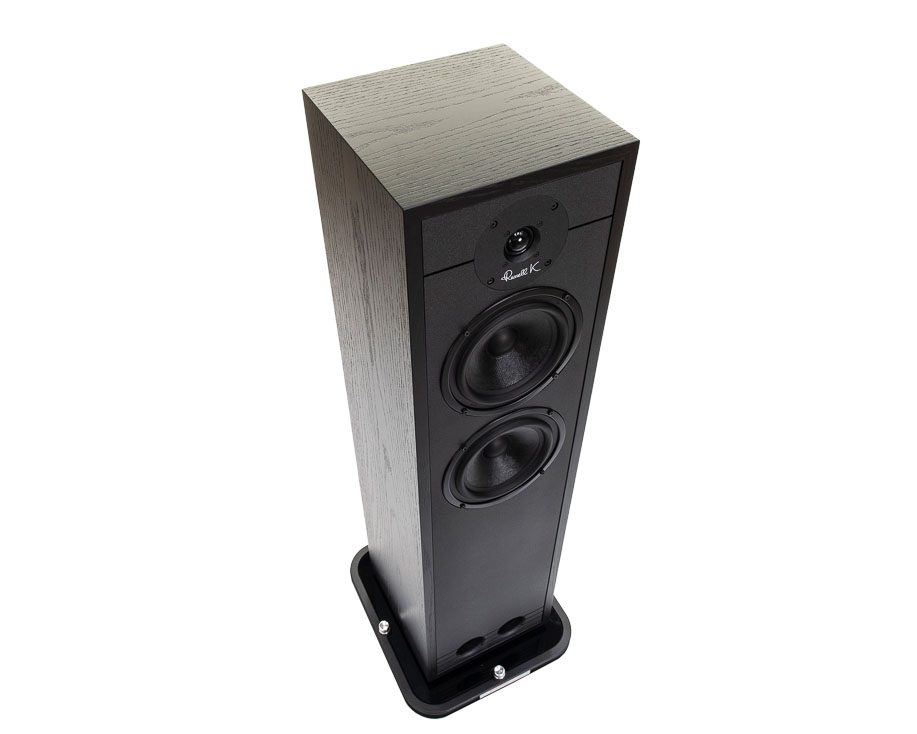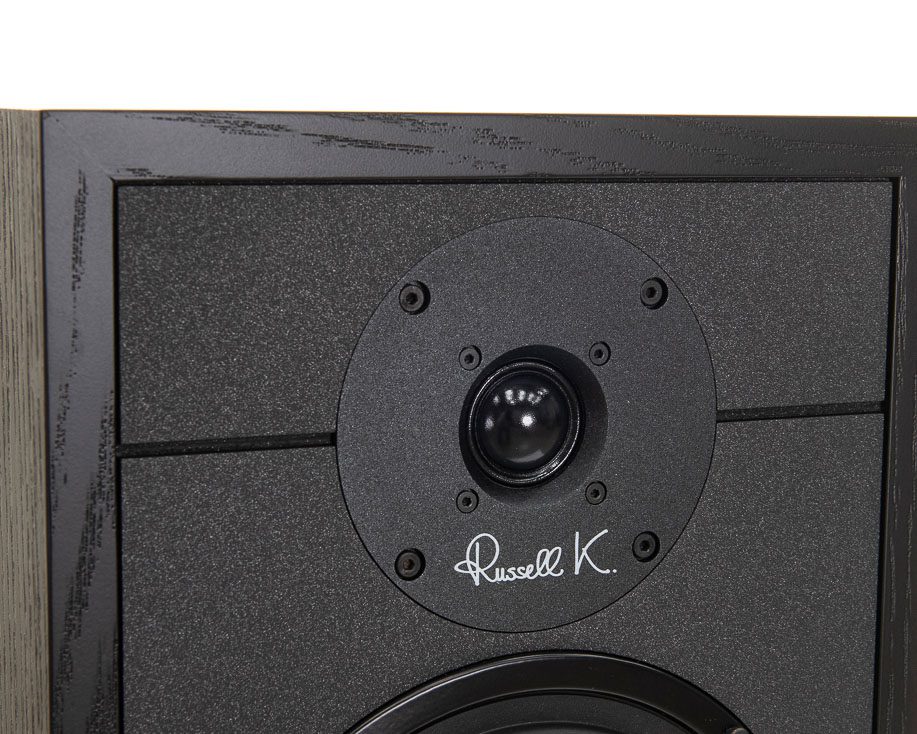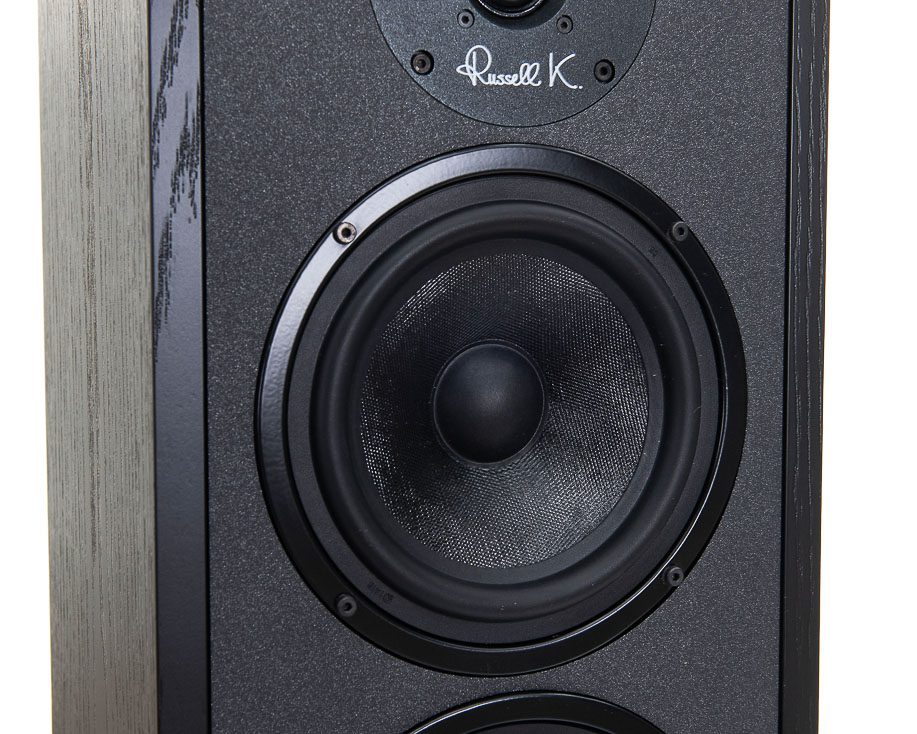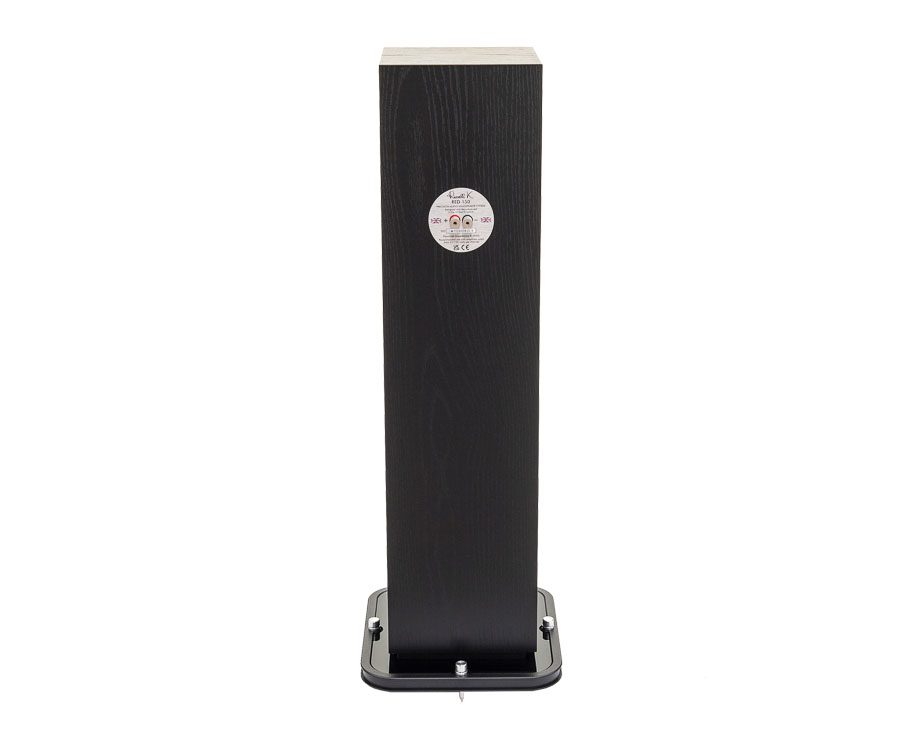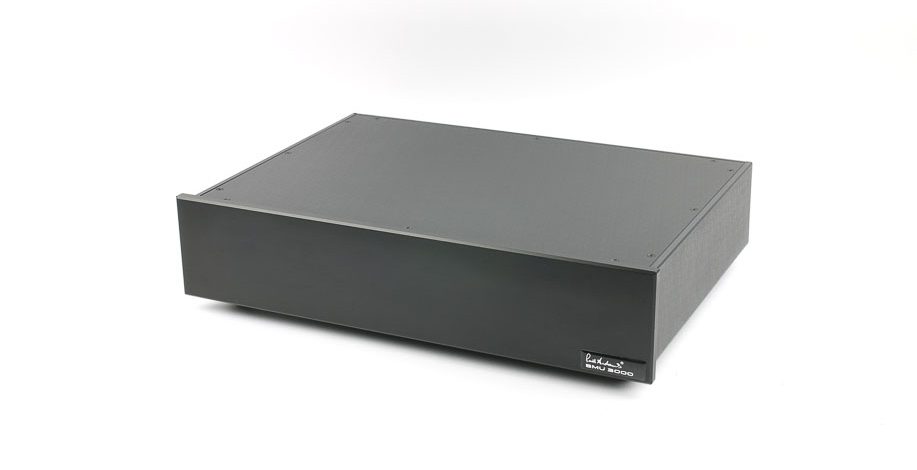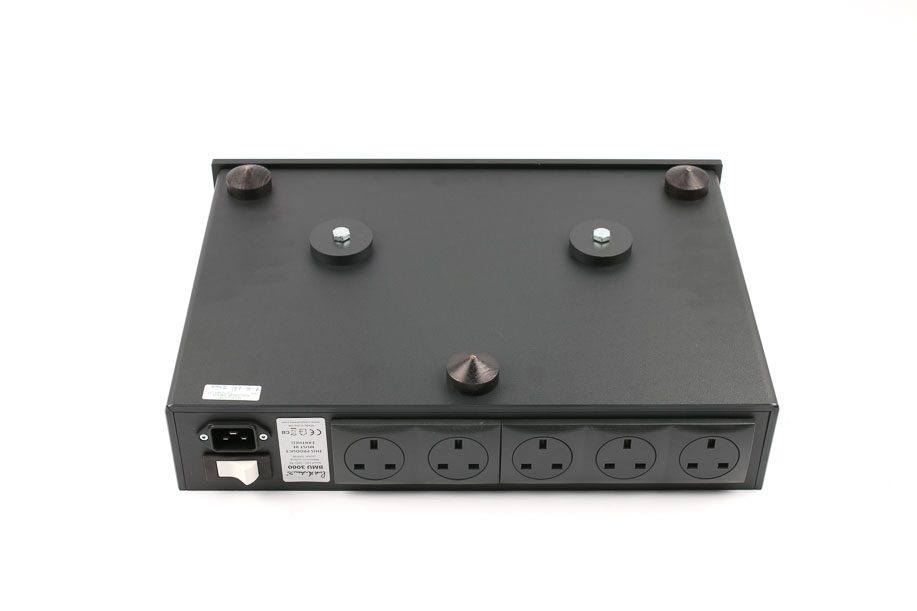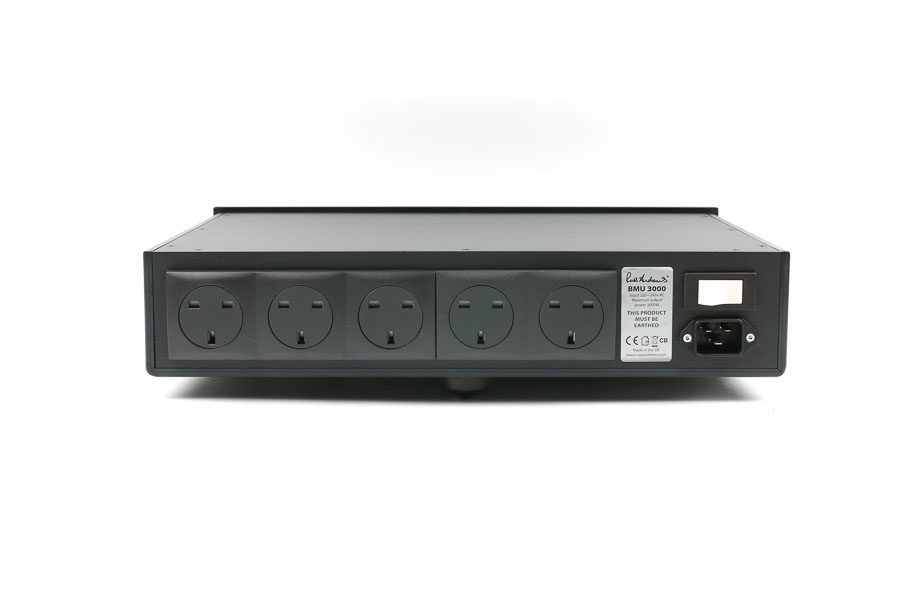The Valve Amplification Company was founded in 1990 by Kevin Hayes and his father Channing Hayes. The company made its name producing the Marantz Classic series of amplifiers for Marantz Japan from 1996 to 1998 (Marantz Model 7 / 7C, Model 8B, Model 9). Based in Sarasota, Florida, VAC has carved a niche reputation as one of the world’s most innovative designers and producers of valve amplifiers. Hayes is one of those rare manufacturers who personally listens to and voices each product that leaves the factory and has a complete command of the workings and sounds of his products. In these days of being told by companies, “your call is important to us” Kevin Hayes means it!
Signature 200 iQ Power amplifiers
The Signature 200 iQ is available as a single stereo amplifier, rated at around 100w per channel, or it can be reconfigured by a toggle switch to a monoblock. Switches also reconfigure the circuits between fully balanced input-to-output or RCA single-ended input.
Developed over 17 years of research with many innovations over its predecessor, the VAC PHI200 features the VAC iQ Continuous Automatic Bias System, which holds the vacuum tube at the correct bias current. This will even shut down the amplifier before the fuse blows, such is its reaction speed. If I think about the time I’ve spent driving around the M25 to repair a valve amplifier that has been “taken out” by a faulty tube, that fast shutdown is useful!
Cathode self-bias output stages drift toward Class B (or beyond) with volume level, while “fixed bias” amplifiers shift toward greater idle current with increased volume. These changes in idle current shift the relationship between the anode characteristics of the tubes and the load line presented by the speakers/output transformer. This is a bit of ‘shifting sand’ foundation, but the iQ system results in a much firmer foundation.
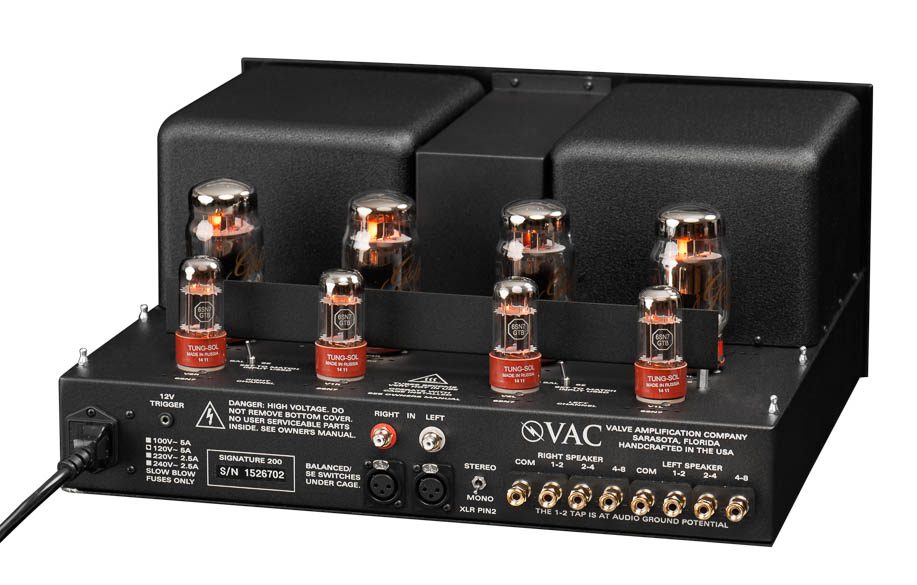
Interestingly, many solid-state amplifiers are designed to do the exact opposite of this, deliberately shifting the bias point with volume level. They fail to be in Class A for unexpected transients and are not in the output device’s most linear operating region at low volume levels.
The 200 iQ’s use highly linear low-mu triodes in the input and driver stages, and the stages are direct-coupled, resulting in extended low frequencies and fast transient response. In balanced mode, these stages are fully balanced. A shield for heat and electrostatic forces is provided between the output tubes and the input/driver section, for greater tube life and improved sound. The 200 iQ amps come with KT88’s fitted, but the unit will work with KT90, KT99, KT120, KT150, and KT170. However, Hayes finds that using KT88’s yield lower distortion and better high-frequency bandwidth.
The ultra-linear output configuration uses proprietary 6.35kg, 21-section, bifilar wound output transformers. There are coupling connections for two, four, and eight-ohms loudspeakers.
VAC Master Preamplifier
The Master Preamp looks almost identical to the Signature Mk2a; it is a two-box affair, power supply and preamp box, illuminated with the blue VAC logo, which a toggle switch in the back can switch off. There are minor cosmetic differences such as the thicker fascia and machined feet. However, internally, the audio circuits are carried on mass loading plates decoupled from the chassis, significantly reducing the effect of vibration on the sound. The volume control is a massive, brass-cased affair made by ALPS, which VAC motorises for remote capability. The control weighs a few kilogrammes and accounts for about 20% of the line stage’s cost. Similarly, the Master includes 50 very expensive, exotic Z-foil resistors made by a firm in Texas.
On the front panel are two large, expensive-looking knobs, input and volume. There are four smaller knobs, which control power, mute, logo and cinema bypass. On the rear, there are high-quality single-ended as well as balanced inputs; five in total plus an optional phono-stage. The phono stage costs an additional £12,000. There is a good selection of impedances, and the MM and MC each have their pairs of RCAs, so it is possible to have both an MM and MC cartridge connected simultaneously and flick between them without pulling out any wires. The preamp has two pairs of XLR and RCA outputs, making bi-wiring relatively straightforward.
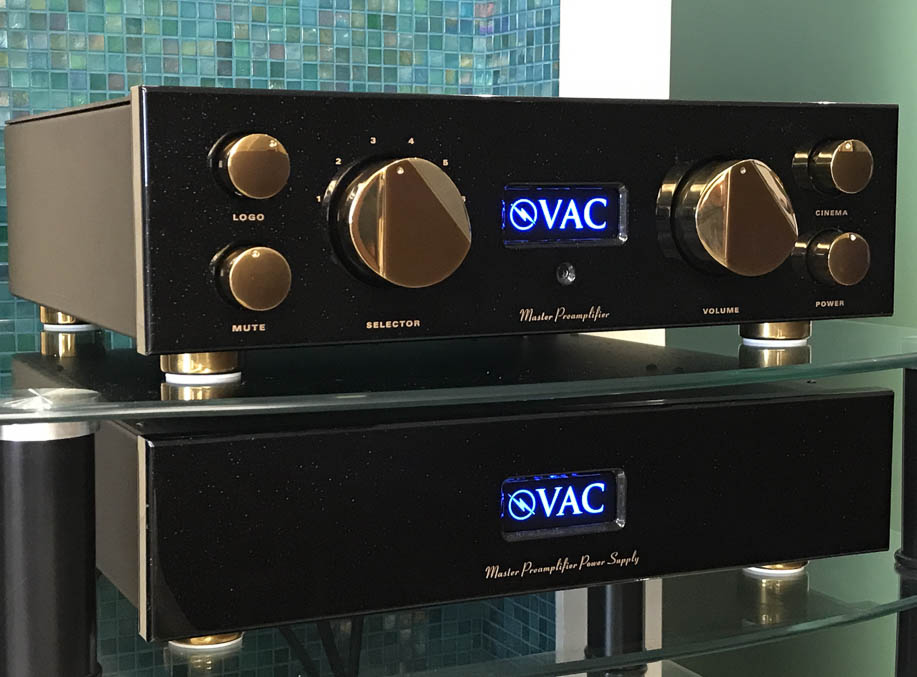
The preamp uses a pair of 6922 triode tubes for the zero-feedback line stage, which is more like a small Class A1 power Amplifier than a conventional preamp. Each fully-balanced channel has zero negative feedback and is coupled to the outside world via a 1:1 ratio input transformer and a step-down output transformer. The result is reasonable gain, low output impedance, with massive current capability. Transformer coupling and zero feedback prevent interactions between feedback loops in the power amplifier and the source components, allowing the sources to perform best.
Passive equalisation
The phono stage uses six 12AX7s and passive equalisation. Looking into the unit with the lid off, it is evident from the point-to-point wiring, those naked Z-foil resistors, rhodium jacks, oversize high-quality parts, and high contact force mechanical switches that much thought has gone into the topography of the wiring. The audio circuits are carried on isolated mass loading plates to resist external vibrations and increase the purity of the sound.
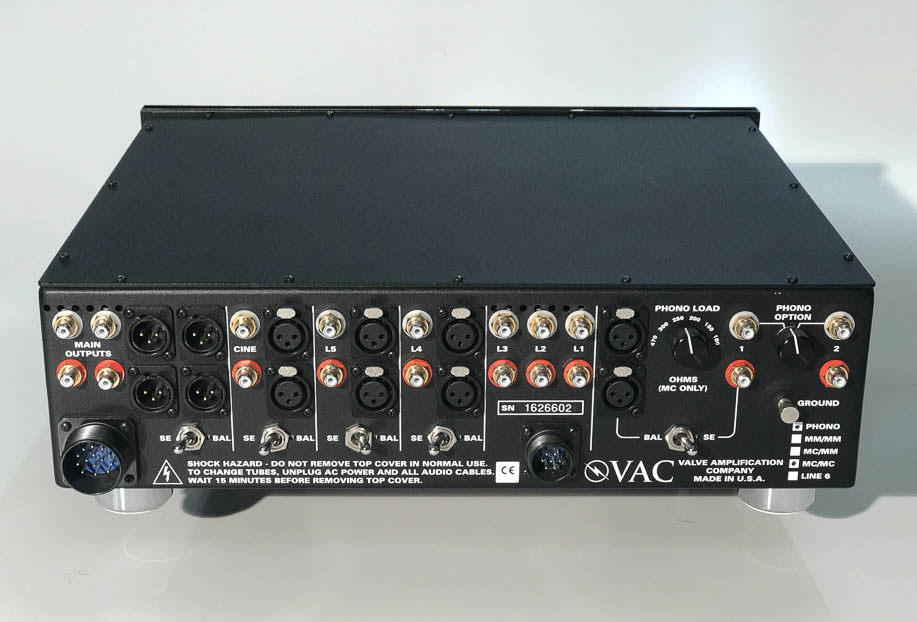
The layout and hand wiring are visually beautiful to behold, I wouldn’t be surprised to see this on exhibition at the Tate Modern! The units are lovingly finished in a thick black lacquer and come in a metallic finish. There is only a bespoke remote-control unit with mute and volume, no input control. Hayes has taken the long way around here, there are far cheaper ways to do volume control than using a motorised belt-driven ALPS HQ PRO, but none that sounds as good. One minor gripe with this was that the angle I could use the remote was limited, and how my system is set out involves a stretch!
Listening
Using some Bowers & Wilkins 802 D4s, a dCS Network Bridge with a Chord DAVE and M-Scaler, a PS20 power regenerator, Townshend Audio interconnects, and speaker cables, I gave the two monoblocs a few hundred hours of break-in time, observing how the sound was changing in the process.
First, Mahler’s 6th Symphony, Kirill Petrenko with the Berlin Philharmonic 96/24. From the pounding marching of the opening, the VAC combo can do guts, scale and incredible accuracy. Bass is thunderous, fast, powerful and very unlike the stereotype of valve amplification. There is an airiness to the soundstage, which gives the impression of this massive Mahler orchestra extending way back and precisely layering the different rows of instruments of the Berlin Philharmonic. There is a sweetness to the tone of the violins and the woodwinds, absolutely no harshness, just a mellowness you hear from great instruments in the flesh. Real depth to the string sound, palpable and weighty, without any smear or smudging. A remarkable combination of massively gripping sound, which is not at all fatiguing to listen to. It also does what marks a good system out from a great system: play a sixty-piece orchestra recorded relatively naturally in a Mahlerian climax. This is where less-than-stellar systems so frequently fail. When the climax occurs here, the VAC combo has immense control; nothing is sacrificed, no loss of detail, fast immediate transients, and no distortion, just a highly coherent reproduction of a huge orchestral climax!
One of the most pleasurable experiences of playing in an orchestra as a violinist is to watch a great work being stripped down to its component parts. For example, a Mozart Symphony is rehearsed in smaller groups of instruments. I remember this experience listening to the late Claudio Abbado conducting the Mahler Chamber Orchestra in Mozart’s Haffner Symphony. With the VAC combo, I can sit in the middle of the orchestra and follow the lines and textures of the individual instruments, I can hear the most minute detail illuminated in the score, how the sheer brilliance of Mozart’s orchestration becomes apparent. It is revelatory and exhilarating to experience. It is presenting vast quantities of detail, and texture and makes the experience of listening like performing.
Best of Breed
On to a spot of vinyl, Art Farmer’s “On the Road” and “Downwind”, it is clear that the phono stage is doing what the best of breed do, bustling in detail, etching the 3D space like CD can struggle with, the hi-hat sounding completely organic and non-brittle, a ‘phatness’ and generosity to the sound which sounds so like the master tape recordings I’ve heard. This £12,000 addition to the preamp is no afterthought and can compete with the best stand-alone affairs available.
The VAC offering here is reassuringly expensive: it is the investment you’d make if you take your music listening very seriously. It is state-of-the-art in terms of amplification and phono-wise, it is the fruit of infinite care and sheer obsession with excellent sound, and it is to be thoroughly recommended for those seeking the highest performance levels available today.
Technical specifications
Master Preamplifier
- Type Line (with optional phono) tube preamplifier
- Inputs 3 sets RCA line input, 2 sets balanced/RCA selectable inputs, 1 set balanced/RCA cinema bypass input, Optional 1 MM and 1 MC (or additional line input if phono is not fitted)
- Outputs 2 sets RCA, 2 sets balanced XLR (EIA “pin 2 hot” studio standard)
- Gain 11dB
- THD < 0.009% @ 1 kHz, 1 V RMS
- Maximum Output < 8 V RMS
- Output Impedance < 150 ohms, 20 Hz–20 kHz, static (i.e., not dependent upon feedback)
- Recommended Output Load > 300 ohms
- Dimensions (H×W×D) Audio chassis (not including knobs and connectors) 14 × 45.7 × 36.8 cm
- Power supply (not including connectors) 10.9 × 45.7 × 36.8 cm
- Weight 27.7kg
- Price £30,000, phono option £12,000
Signature 200 iQ power amplifier
- Type Mono valve power amplifier (can be used as a stereo amp)
- Power Output 200 watt mono (100w stereo)
- Tube Complement 4 × type 6SN7, 4 × type KT88. Compatible with KT120. Electrically compatible with KT150 (may be too tall to fit under the cage)
- Frequency Response 4 Hz to 85 kHz, +0/-3 dB
- Dimensions (H×W×D) 457 mm × 438 mm × 222 mm
- Weight 45.5kg
- Price £30,000
Manufacturer
VAC
UK distributor
Signature Systems
+44(0)7738 007776






